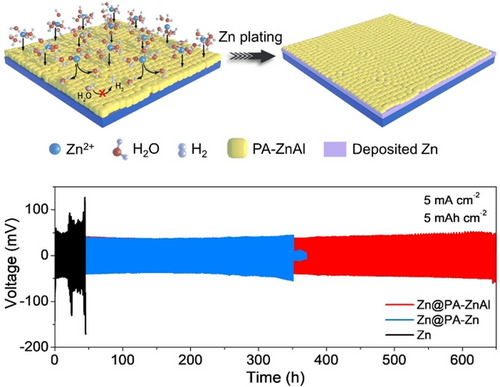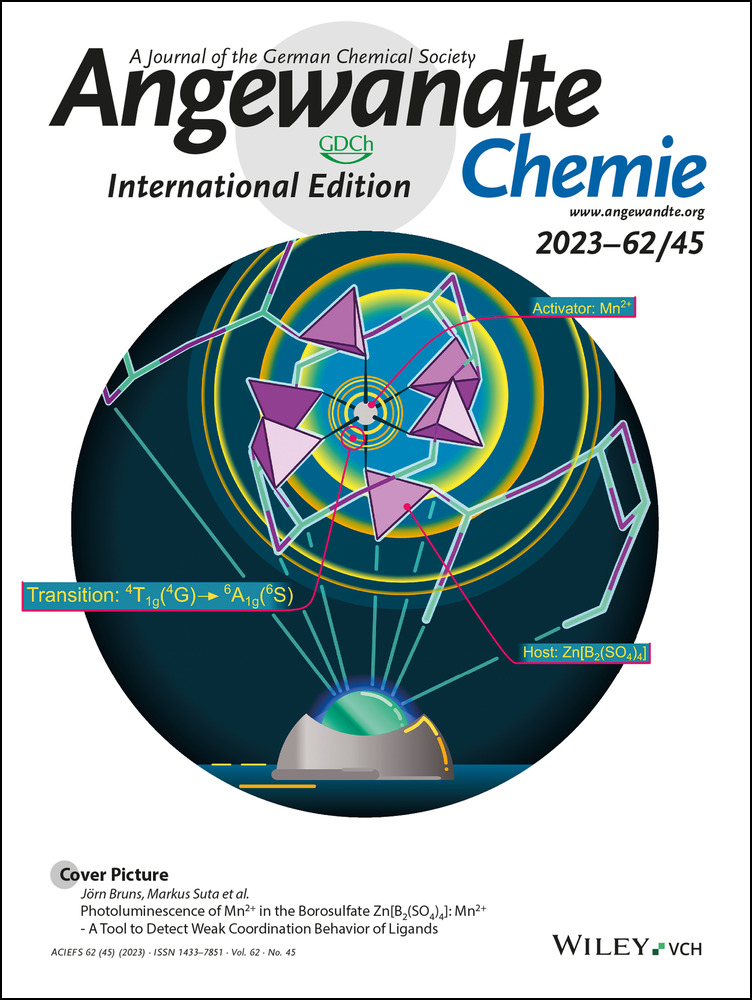Zincophilic Interfacial Manipulation against Dendrite Growth and Side Reactions for Stable Zn Metal Anodes
Graphical Abstract
A phytic acid (PA)-ZnAl coordination compound is demonstrated as a multifunctional interphase layer to achieve highly reversible and dendrite-free Zn metal anodes. The zincophilic PA-ZnAl layer enables the homogenized Zn2+ flux, rapid desolvation kinetics, enhanced Zn2+ transference number, and suppressed side reactions, thus contributing to the high Coulombic efficiency and enhanced cycling performance with dendrite-free morphology.
Abstract
Constructing multifunctional interphases to suppress the rampant Zn dendrite growth and detrimental side reactions is crucial for Zn anodes. Herein, a phytic acid (PA)-ZnAl coordination compound is demonstrated as a versatile interphase layer to stabilize Zn anodes. The zincophilic PA-ZnAl layer can manipulate Zn2+ flux and promote rapid desolvation kinetics, ensuring the uniform Zn deposition with dendrite-free morphology. Moreover, the robust PA-ZnAl protective layer can effectively inhibit the hydrogen evolution reaction and formation of byproducts, further contributing to the reversible Zn plating/stripping with high Coulombic efficiency. As a result, the Zn@PA-ZnAl electrode shows a lower Zn nucleation overpotential and higher Zn2+ transference number compared with bare Zn. The Zn@PA-ZnAl symmetric cell exhibits a prolonged lifespan of 650 h tested at 5 mA cm−2 and 5 mAh cm−2. Furthermore, the assembled Zn battery full cell based on this Zn@PA-ZnAl anode also delivers decent cycling stability even under harsh conditions.
Open Research
Data Availability Statement
The data that support the findings of this study are available from the corresponding author upon reasonable request.





